The Crowd Energy Concept
Stephanie Teufel and Bernd Teufel
The Crowd Energy Concept
Stephanie Teufel and Bernd Teufel
—After the Fukushima disaster, European politicians began to reassess the energy strategy for their countries. The focus is now on renewable energy sources and as a result on decentralization. The decentralized generation, storage, and of course the consumption of energy is the central point. Now with the new developments under the roof of energy turnaround the way back from the centralized architecture of our energy system to a more decentralized one is predetermined. Decentralization implies the change in the role of today’s consumers. They become energy prosumers. This is the basis for the crowd energy concept. In this position paper the crowd energy concept is introduced and necessary research fields are identified.
Index Terms—Crowd energy, decentralization, energy turnaround, energy prosumer, smart grid.
1. Introduction
“Japan in chaos” was a headline of the March 11th, 2011 issue of The Times[1]and a day later we could read“Mass evacuation as nuclear reactor cooling plant fails”[2]. The shock over the Fukushima disaster was all over the world to feel and politicians, especially in Europe, began to reassess the energy strategy for their countries. For example, the German government has done a U-turn over energy policies. “Energiewende” became one of the most cited terms in Germany and is now a “Germanism” that has entered the English language[3].
This also applies to Switzerland. The Federal Council and Parliament of Switzerland decided after the Fukushima disaster in 2011 that Switzerland is to opt out of nuclear energy on a step-by-step basis. This means that no new nuclear power plants will be realized and that the existing nuclear power plants are abandoned by the end of their safe service life[4]. Switzerland developed and announced the“Energy Strategy 2050” with the effect that the energy system of Switzerland will be subject to a tremendous multidimensional restructuring process.
The result is a broad and sometimes emotional debate of the Swiss energy future. Topics like reliable energy supply and energy security, efficiency, and sustainability, renewable energy, and more and more decentralized production and storage of energy are critically examined. It is obvious that these developments will have major impacts on the future of the whole economy. In consequence, we will come to a sustainable economy driven by efficient usage of renewable energy and an extensive elimination of non-renewable energy sources like nuclear, oil or coal. Thus the energy turnaround is more than just a selective additional usage of renewable energy—it defines a shift of paradigm from a “TO-YOU” to a “WITH-YOU” relationship between producers and consumers of energy. This is comparable to what has happened with the introduction of Web2.0 and social media applications, for example, in government agencies[5].
Against this background, the technology and management potential must be fully exploited to achieve innovation in the energy sector. Considering the progress of industrial automation in terms of technical processes in the last few years, it seems to be logical to apply the developed knowledge, tools, and processes to the energy sector, thus bringing the European centralized energy system into the 21st century. The keywords are the sensors technology, storage technology, renewable energy technology, remote control and automation systems, and machine-to-machine communication. Generally speaking, the central element is information and communication technology allowing a bidirectional high-speed communication between the components on the production and consumption sides as well as on the grid itself.

Fig. 1. Drivers for the energy turnaround[6].
The technological impact must be seen in this context. But we must note that not only the development in technology promotes the energy turnaround, but also the sociological, economic, environmental, and political factors drive the developments to change the energy system into a new energy era as shown in Fig. 1[6]. And for a successful and sustainable implementation of the energy turnaround, it is essential to analyze and discuss not only the technical but also the sociological, economic, and political dimensions as well.
2. Intelligent Electricity System
The engineering progress is one fundamental cornerstone in the energy turnaround process, but the sociological, economic, environmental, and political aspects should not be underestimated. All these drivers will force the evolution of our energy system and in terms of electricity this will lead to a so-called intelligent electricity network or a smart grid. According to Gharavi and Ghafurian[7], a smart grid is“an electric system that uses information, two-way, cyber-secure communication technologies, and computational intelligence in an integrated fashion across the entire spectrum of the energy system from the generation to the end points of consumption of the electricity”.
So the future is characterized by a two-way flow of electricity and information; the latter is used for automation and control. The corresponding change in the power distribution is shown in Fig. 2.
The technological developments, for example in wind turbines, photovoltaic systems, biomass power plants, as well as in storage technology (e.g. see [8]-[11]) together with the applications of information and communication technologies, make the decentralized usage of renewable energy sources possible. Furthermore, the standardization on the interoperability of energy technology and information technology operations with the electric power system, end-use applications, and loads is well under way[12].
All these developments and efforts have the effect that the energy consumer now can change his role: from pure consumption to generation, storage, and consumption (load).
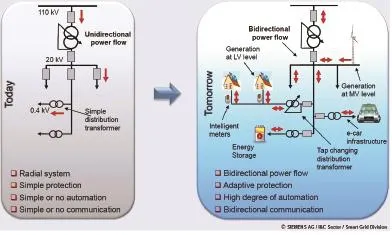
Fig. 2. Power distribution today and tomorrow[13].
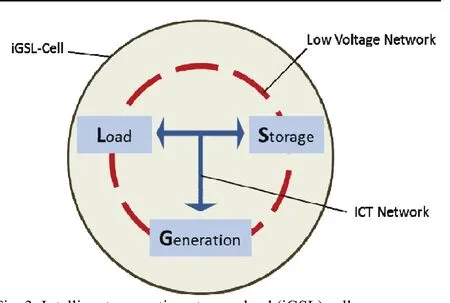
Fig. 3. Intelligent generation-storage-load (iGSL) cell.
This can be seen as the extrapolation of what Alvin Toffler once called a prosumer[14]. Thus in terms of electrical energy systems the prosumer is characterized by an intelligent generation-storage-load-cell (iGSL-cell) as shown in Fig. 3 with its interface to the electricity backbone.
3. Crowd Energy
The consequence of the development shown above can be described by the terms distributed and decentralized. Our future electrical energy system will consist of plenty of iGSL-cells as well as a number of somehow traditional power producers.
This leads us to the crowd energy concept: crowd energy is the collective effort of individuals or profit or non-profit organizations, or both, pooling their resources through online information and communication technology-applications (ICT-applications) to help to implement the energy turnaround. This implies both, the concept of decentralization (production, storage, and consumption of renewable electricity) and a substantial change in society, economy, and politics. Electricity storage is the innovation crystallization point. According to W?fler and Heegaard[15], information and communication technology will play an essential role in future power grids.
Technically speaking the introduced iGSL cells are the basic elements of the crowd energy concept. Pooling numerous cells in a network, connecting them by communication lines, and finally processing the information in a crowd management system yields to an iGSL cell crowd. Thus the crowd energy concept is represented by a layered architecture (Fig. 4). It should be noted that the structure of the crowd does not have to be fixed. It is rather the case that the iGSL cells can and should vary over time.

Fig. 4. Crowd energy layered architecture.
Considering the energy turnaround we are talking about a socio-technological system. The mutual dependency between grid development and changing roles of end users must be considered. The iGSL cells make energy prosumers possible. On the one hand the prosumer is a new player in the energy (electricity) market and the prosumer’s behavior is not evaluated yet. On the other hand the prosumer is the important factor within the crowd energy concept helping to implement the energy turnaround.
Therefore, crowd energy covers more than technical aspects in particular fields such as the market design, mental accounting, and customer behavior (see Fig. 5). Research is necessary for the identification of socio-economic motivations and regulatory measures as well as specific and sustainable funding policies supporting the crowd energy concept and the energy turnaround with it.
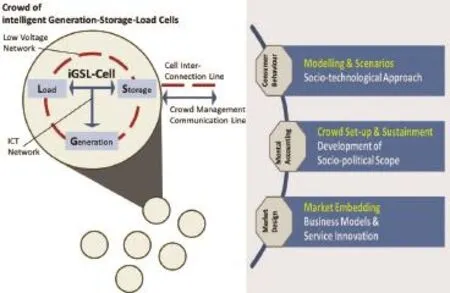
Fig. 5. Crowd energy from a energy prosumer perspective.
4. Contributions to a Society as a Whole Electricity System—Issues of Motivation
If carrying the energy prosumer and the iGSL-Cell idea respectively a bit further we have to examine the topics both from the technological and economic sides as well as from a socio-psychological perspective. Here we briefly focus on the socio-psychological side.
When “the end points of consumption of electricity”[7](the electricity consumers) get empowered to produce and store energy (electricity), they will have the possibility to share their very own electricity with the other consumers, most probably after covering their own demand. But why should they share? What could be the motivation to contribute to a society as a whole electricity system?
The field of human motivation can address these questions. From literature it is known that human motivations are categorized into intrinsic and extrinsic ones (see e.g. [16]-[18]). An intrinsically motivated person pursues an activity for its own sake. The emotional fulfilment is the driving force, e.g., acting for fun or challenges[16]. On the other hand, an extrinsically motivated person pursues an activity to achieve a certain outcome, such as financial incentives (payment) or the avoidance of sanctions. So satisfaction comes not from the activity itself but rather from the extrinsic consequences to which the activity leads[17].
The taxonomy of motivation for an owner of an iGSL-cell to contribute to a society as a whole electricity system is shown in Fig. 6. From an intrinsic point of view his/her motivation can be driven for example by technical curiousness, social conscience or the desire for independency and security. On the other hand, the extrinsic view will bring for instance financial and regulatory aspects into consideration. It is obvious that future decentralized electrical energy systems can be brought on line only through establishing and linking-up a great number of iGSL-cells which are not operated by classical power suppliers but by individuals and organizations or companies form other industries. Consequently, beside technical aspects motivational aspects must be discussed.

Fig. 6. Taxonomy of motivation (according to [16]).
We believe that mixtures of different intrinsic and extrinsic motivations are needed to support the establishment of a decentralized electrical energy system. For example, a performance-based funding of the initial equipment (extrinsic) can make sense, coupled with the simultaneous strengthening of consciousness (intrinsically) to cater not only for one’s own independence and security, but also to act in a socially responsible way.
It has to be noted that the extrinsic motivation can destroy intrinsic motivation[19]-[23]. For example, the subsidization of photovoltaic systems (extrinsic motivation) in Germany[24]is rather questionable, since it was not elaborated at all—the hidden cost of reward[25]was not followed. Now financial hazards are in sight. This example also shows that motivation based on financial incentives only, must not necessarily be sustainably successful.
In terms of the energy turnaround it is essential to stimulate both, intrinsically and extrinsically. This is a socio-political challenge which is not solved so far. Further research is identified and must be undertaken.
5. Decentralization
Generation of electricity started in the nineteenth century when the first power generation systems were established. Electricity was only locally available in small decentralized networks. Further developments brought large distribution grids and large centralized power plants in the twenties century. Reliability and security of supply were and are still the basic points. Now with the new developments under the roof of energy turnaround the way back from the centralized architecture to a more decentralized one is predetermined (see Fig. 7).
According to Fanget al.[26], the electricity generation is the process of generating electricity from other forms of energy, such as natural gas, coal, nuclear power, the sun, and wind. The mix in electricity production in Switzerland for the year 2012 is shown in Fig. 8.
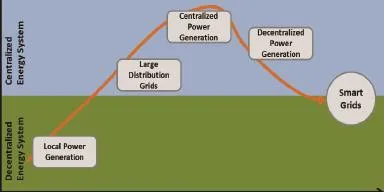
Fig. 7. Grades of centralization/decentralization over time according to [27].
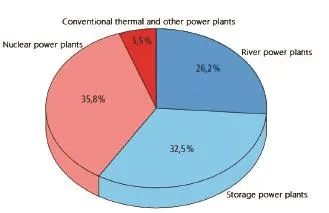
Fig. 8. Swiss electricity generation mix 2012[28].
Here it is clearly recognizable that Switzerland is still characterized by the centralized power generation. This is similar to other European countries such as Italy, France or Germany, as shown in Fig. 9.
The term Energiewende (energy turnaround) characterizes the tremendous rebuilding of the still existing 20th century power supply system (cf. Fig. 8 and Fig. 9). One part of that process is that we must use less energy and handle energy more efficiently. This is a socio-technological aspect since optimizations can be done by the application of sensors and controllers, but the corresponding changes must also take place in the heads.
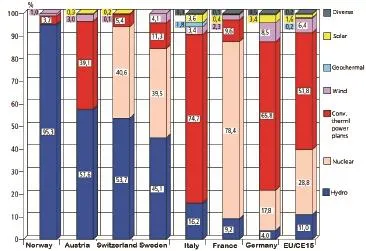
Fig. 9. European electricity generation mix 2011[28].
The second part of the energy turnaround process describes the usage of solar panels, wind turbines, hydroelectric power stations, and other renewable energy resources, such as biogas for the production of electricity and heat thus eliminating fossil and nuclear power plants.
Thus energy turnaround has important side effects:
1) The shift away from fossil, exhaustible resources such as coal, gas or uranium leads to a cleaner and more climate-friendly energy production.
2) The steadily growing deployment of solar photovoltaic panels, due to the dramatic drop in prices, yields an increase of decentralized generation.
3) Decentralized electric energy generation overcomes sustainably transmission losses which inherently increase with the cable length[29].
4) Decentralized energy generation strongly limits the potential for disastrous consequences in terms of fatalities[30].
Power systems are increasingly influenced by decentralized energy generation based on renewable resources. Usually this decentralized energy generation is a small scale generation on a medium and/or low voltage level. According to the European Parliament’s Committee on Industry, Research and Energy[31], the demand response and energy storage are key components in a decentralized power system. The demand response allows that energy loads are automatically shifted around in time while the storage allows an energy time shift from “high production low consumption” to “l(fā)ow production high consumption”.
Research is necessary to establish automation and control systems to support the decentralization, i.e. the application of information and communication technologies to integrate and cultivate the decentralized generation, storage and load, energy prosumers, and business relationships. Again it is not just a technological issue. For example, energy time shift through the application of energy storage systems makes it necessary to analyze the energy prosumer’s behavior in terms of his decision processes (egoism vs. altruism). Again further research is identified and must be undertaken.
6. Research Objectives Crowd Energy
The crowd energy concept was developed at the International Institute of Management in Technology (iimt), University of Fribourg. Now the research projects to prove the theory and to establish the concept must be set up.
The aim of the crowd energy project is threefold: 1) to conduct a thorough analysis of the current state of decentralized renewable energy production-storage-consumption and determine relevant factors in terms of scenario generation, service innovation, and set-up of business models; 2) to deliver and deploy a set of scenarios based on the cross impact balance (CIB) method , also calculating, weighting, and validating them; 3) to consider and discuss the crowd energy concept in a socio-technical as well as a socio-political scope in order to answer issues of energy prosumer behaviors, sustainable crowd set-up, and necessary political actions.
Appropriate business models will demonstrate where new business opportunities for all stakeholders are to be found and will illustrate how they can be used and how the deployment of the proposed solution will support the energy market entities in their decision-making processes.
7. State of Research
The crowd energy project will deliver an innovative conceptual framework functioning as a generic crowd energy architecture dedicated to decentralized renewable energy production-storage-consumption. Moreover, it will provide research on the implications of the defined scenarios and the corresponding new business models for the energy market.
Various research activities around the energetic future and low-carbon society have been set up around the world over the past years. For example, in [32], “energy autarky is presented as a conceptual framework for sustainable regional development”. The authors also emphasized that besides technologies and innovations, the concept requires governmental and civil actors supporting and motivating the regional population, i.e. the energy prosumers.
Some of the most important European research activities are clustered around the Fraunhofer Institutes (e.g. [33]), particularly the “Morgenstadt Initiative”[34]which provides “research for sustainable, livable and adaptive cities of the future”, as well as the miscellaneous storage/battery research projects[9],[10],[35]-[37]. In Germany, there are several regions that are considered as a showcase for the future energy system and are supported by the German government. For example, the Model City Mannheim Project developed an innovative ICT infrastructure “to boost energy efficiency and receptivity for renewable energy as well as to strengthen grid users’ personal responsibility for their energy consumption.”[38]
Numerous specific scenarios proposed by diverse groups from academia, profit and non-profit organizations, as well as governmental organizations such as the European Commission (reports from EC[39], Shell[40], or NREL[41]) are available. However, only a few focused on decentralized renewable energy production-storage-consumption and even less considered the crowd concept as a possible enabling solution. Most scenarios were developed before the Fukushima disaster and therefore did not mention the subsequent dramatic political changes that have since taken place in some countries.
8. Conclusions
Today’s world is in a phase of transition. Various studies and analyses indicate the upcoming change. The efforts under the energy turnaround question our previous methods of economic and social developments. We predict that the general phenomenon of crowds is one of the main drivers of this change. Therefore, scenarios, particularly their calculation, weight, and validation, are highly important in terms of the predicted change. The scenarios will provide the characteristics and framework for crowd energy business concepts which are sufficiently safe and environmentally compatible, and economical technologies for maintaining a high quality of life. Based on that, incentive systems must be developed, which focus not only on monetary aspects but also emphasize on the security of energy supply or the preservation and improvement of living standards.
Different research projects on the issues identified in this conceptual position paper have already been placed[42],[43].
[1] S. J. Fearns, “Japan in chaos,” The Times, 11 March 2011.
[2] L. Lewis, “Mass evacuation as nuclear reactor cooling plant fails,” The Times, 12 March 2011.
[3] C. Winter, “The Energiewende: Not an energy turnaround, rather a customary energy system adaption,” Int. Journal of Hydrogen Energy, vol. 37, no. 22, pp. 16759-16763, 2012.
[4] (December 2013). BFE—Bundesamt für Energie. [Online]. Available: http://www.bfe.admin.ch/themen/00526/00527/ index.html?lang=en
[5] T. Friedl, D. Feichtner, and S. Teufel, “4-LIFE-model-an approach for a government-with-you strategy,” in Proc. of Int. Conf. on E-Learning, E-Business, Enterprise Information Systems, and E-Government, Las Vegas, 2012, pp. 255-259.
[6] D. Openshaw, G. Strbac, and G. Ault, “Distributed generation and energy efficiency,” in Proc. of 21st Int. Conf. on Electricity Distribution—Special Report Session 4, Frankfurt, 2011, pp. 1-19.
[7] H. Gharavi and R. Ghafurian, “Smart grid: The electric energy system of the future,” Proc. of the IEEE, vol. 99, no. 6, pp. 917-921, June 2011.
[8] H. Ibrahim and A. Ilinca. (2013). Techno-economic analysis of different energy storage technologies. [Online]. Available: http://www.intechopen.com/books/energy-storage-technolog ies-and-applications/techno-economic-analysis-of-different-energy-storage-technologies
[9] S. Koohi-Kamali, V. Tyagi, N. Rahim, N. Panwar, and H. Mokhlis, “Emergence of energy storage technologies as the solution for reliable,” Renewable and Sustainable Energy Reviews, vol. 25, pp. 135-165, Sep. 2013.
[10] M. Baumann, B. Zimmermann, H. Dura, B. Simon, and M. Weil, “A comparative probabilistic economic analysis of selected stationary battery systems for grid applications,” in Proc. of Int. Conf. on Clean Electrical Power, Alghero, 2013, pp. 87-92.
[11] V. Tyagi, N. A. Rahim, N. Rahim, and J. Selvaraj, “Progress in solar PV technology: Research and achievement,” Renewable and Sustainable Energy Reviews, vol. 20, pp. 443-461, Apr. 2013.
[12] IEEE Guide for Smart Grid Interoperability of Energy Technology and Information Technology Operation with the Electric Power System (EPS), End-Use Applications, and Loads, The Institute of Electrical and Electronics Engineers (IEEE), New York, 2011.
[13] T. Sezi. (2012). Power system security: sustainable energy supply requires innovative concepts for protection, control & automation. [Online]. Available: http://old.life-needspower.de/2012/06_Sezi.pdf
[14] A. Toffler, The Third Wave: The Classic Study of Tomorrow, New York: Bantam Books, 1980.
[15] J. W?fler and P. Heegaard, “A combined structural and dynamic modelling approach for dependability analysis in smart grid,” in Proc. of the 28th Annual ACM Symposium on Applied Computing, Coimbra, 2013, pp. 660-665.
[16] R. Ryan and E. Deci, “Intrinsic and extrinsic motivations: classic definitions and new directions,” Journal of Contemporary Educational Psychology, vol. 25, pp. 54-67, Jan. 2000.
[17] O. Cinar, C. Bektas, and I. Aslan, “A motivation study on the effectiveness of intrinsic and extrinsic factors,” Journal of Economics and Management, vol. 16, no. 4, pp. 690-695, 2011.
[18] N. Kaufmann, T. Schulze, and D. Veit, “More than fun and money: Worker motivation in crowdsourcing—A study on mechanical Turk,” in Proc. of the 7th Americas Conf. on Information Systems, Detroit, 2011, pp. 340-1-11.
[19] M. Lepper and D. Greene, The Hidden Costs of Reward, Morristown: Lawrence Erlbaum Associates, 1979.
[20] T. Malone, “Toward a theory of intrinsically motivating instruction,” Cognitive Science, vol. 4, no. 4, pp. 333-369, 1981.
[21] B. S. Frey and R. Jegen, “Motivation crowding theory: A survey of emperical evidence,” Journal of Economic Surveys, vol. 15, no. 5, pp. 589-611, 2000.
[22] C. F. Camerer, “Removing financial incentives demotivates the brain,” PNAS Proc. of the National Academy of Sciences of the United States of America, vol. 107, no. 49, pp. 20849-20850, 2010.
[23] K. Murayama, M. Matsumoto, K. Izuma, and K. Matsumoto,“Neural basis of the undermining effect of monetary reward on intrinsic motivation,” PNAS Proc. of the National Academy of Sciences of the United States of America, vol. 107, no. 49, pp. 20911-20916, 2010.
[24] H. Wirth, “Aktuelle Fakten zur photovoltaik in Deutschland,” Fraunhofer-Institut für Solare Energiesysteme ISE, Freiburg, 2014 (in German).
[25] M. R. Lepper and D. Greene, The Hidden Costs of Reward: New Perspectives on Psychology of Human Motivation, Hillsdale: Erlbaum, 1978.
[26] X. Fang, S. Misra, G. Xue, and D. Yang, “Smart grid—The new and improved power grid: A survey,” IEEE Communications Surveys & Tutorials, vol. 14, no. 4, pp. 944-980, 2012.
[27] R. Speh. Intelligente L?sungen für die Stadt der Zukunft. [Online]. Available: http://www.smart-energy-conference.de/ wp-content/uploads/2013/05/1-1-_Speh.pdf
[28] Bundesamt für Energie BFE, “Grafiken der elektrizit?tsstatistik 2012—graphiques de la statistique suisse de l'électricité 2012,” Eidgen?ssisches Departement für Umwelt, Verkehr, Energie und Kommunikation UVEK, Bern, 2012 (in German and French).
[29] S. Jucá, P. Carvalho, and F. Brito, “A low cost concept for data acquisition systems applied to decentralized renewable energy plants,” Sensors, vol. 11, no. 1, pp. 743-756, 2011.
[30] O. Edenhofer, R. Pichs-Madruga, Y. Sokona, K. Seyboth, P. Matschoss, S. Kadner, T. Zwickel, P. Eickemeier, G. Hansen, S. Schl?mer, and C. von Stechow, “IPCC 2011: Summary for policymakers,” present at IPCC Special Report on Renewable Energy Sources and Climate Change Mitigation, Cambridge, May 5-8, 2011.
[31] ITRE European Parliament’s Committee on Industry, Research and Energy, “Decentralized energy systems,” present at European Parliament, Brussels, June, 2010.
[32] M. O. Müller, A. St?mpfli, U. Dold, and T. Hammer, “Energy autarky: A conceptual framework for sustainable regional development,” Energy Policy, vol. 39, pp. 5800-5810, Oct. 2011.
[33] M. Dalheimer, Power to the People—Das Stomnetz der Zukunft, Kaiserslautern: Fraunhofer ITWM, 2011. (in German)
[34] H. Bullinger and B. R?thlein, Morgenstadt. Wie wir morgen leben: L?sungen für das urbane Leben der Zukunft, München: Carl Hanser Verlag, 2012. (in German)
[35] European Commission. (2013). The future role and challenges of energy storage. [Online]. Available: http://ec.europa.eu/energy/infrastructure/doc/energy-storage/ 2013/energy_storage.pdf
[36] Union of the Electricity Industry-Eurelectric, “Decentralised storage: Impact on future distribution grids,” Eurelectric Report, Brussels, 2012.
[37] International Electrotechnical Commission (IEC), “Electrical energy storage,” IEC White Paper, Geneva, 2011.
[38] A. KieBling and M. Khattabi, “Cellular system model for smart grids combining active distribution networks and smart buildings,” in Proc. of the 1st Int. Conf., E-Energy, Heidelberg, 2011, pp. 225-242.
[39] European Commission, “European energy and transport scenarios on energy efficiency and renewables,” DG Energy and Transport, Luxembourg, 2006.
[40] Shell Energy Scenarios to 2050, Shell Int. BV, The Hague, 2008.
[41] P. Denholm, M. Hand, T. Mai, et al., “The potential role of concentrating solar power in enabling high renewables scenarios in the United States,” NREL Technique Report, Golden, 2012.
[42] M. Gstrein and S. Teufel, “The changing decision patterns of the consumer in a decentralized smart grid,” present at the 11th Int. Conf. on the European Energy Market, Krakow, May 28-30, 2014.
[43] M. Gstrein and S. Teufel. Smart value energy network. [Online] Available: http://www.iimt.ch/images/Chair Research/Documents/Research_Poster_Mario%20Gstrein_0 8112013_V2.pn
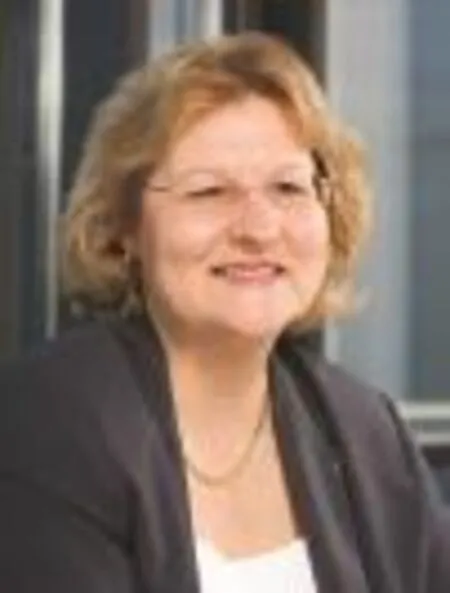
Stephanie Teufelstudied informatics at the Technical University of Berlin and the Swiss Federal Institute of Technology Zurich (ETH Zurich). She received her Doctor’s degree from the University of Zurich in 1991. She was a lecturer at the University of Wollongong, Australia, and a university professor in information systems at the Carl von Ossietzky Universit?t Oldenburg, Germany. Since 2000 she holds a full professorship in management in information and communication technology at the Faculty of Economics and Social Sciences, University of Fribourg, Switzerland. Furthermore, she is the Director of the International Institute of Management in Technology (iimt). Currently, she is the Dean of the Faculty of Economics and Social Sciences, University of Fribourg, Switzerland. Her research interests include management of information security, energy systems management, project management, innovation, and technology management.

Bernd Teufelstudied computer science (informatik) at the University of Karlsruhe, Karlsruhe, Germany. Subsequently, he joined the Department of Computer Science, ETH Zurich, where he received his doctor’s degree (Ph.D.) in 1989. He was a lecturer at the Department of Computer Science, University of Wollongong, Australia,and a scientific consultant with Commonwealth Scientific and Industrial Research Organization (CSIRO), Sydney, before he founded the company “ART Informationssysteme GmbH” in Germany. After several mergers he left the organization in 2008 and founded the consulting agency“Dr. Teufel Consultancy Services” in Switzerland in 2009, mainly focusing on independent research consultancy. His research interests include ICT-management, social media, management of energy systems, energy turnaround, innovation, and project management.
Manuscript received June 13, 2014; revised July 13 2014.
S. Teufel is with the International Institute of Management in Technology, University of Fribourg, Fribourg 1700, Switzerland (Corresponding author e-mail: stephanie.teufel@unifr.ch).
B. Teufel is with Dr. Teufel Consultancy Services, Duedingen 3186, Switzerland (e-mail: info@drteufel.ch).
Color versions of one or more of the figures in this paper are available online at http://www.journal.uestc.edu.cn.
Digital Object Identifier: 10.3969/j.issn.1674-862X.2014.03.005
 Journal of Electronic Science and Technology2014年3期
Journal of Electronic Science and Technology2014年3期
- Journal of Electronic Science and Technology的其它文章
- Guest Editorial Special Section on Energy-Efficient Technologies
- Guest Editorial TTA Special Section on Terahertz Materials and Devices
- Object Tracking Using a Particle Filter with SURF Feature
- Numerical Solution for Fractional Partial Differential Equation with Bernstein Polynomials
- Role of Gate in Triode-Structure for Carbon Nanotube Cold Cathode
- A High Efficiency Fully Integrated OOK Transmitter for WBAN
